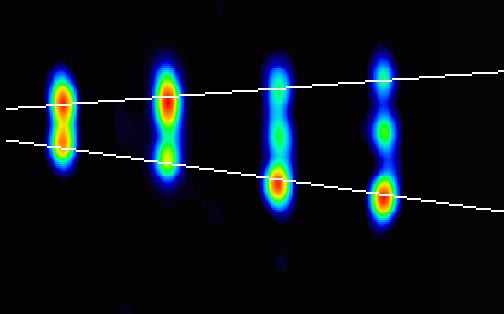Micro-Quasar GRS1915 Puffs

Explanation:
On the far side of
our Galaxy,
gas clouds explode away from a small
black hole.
This might seem peculiar, as
black holes are supposed to
attract matter.
But material falling toward a
black hole collides and heats up,
creating an environment similar to a
quasar that is far from stable.
In the
above time-lapse sequence,
micro-quasar GRS1915 expels bubbles of hot gas in spectacular
jets.
These computer enhanced radio images show one
plasma bubble coming almost directly toward us at 90 percent the
speed of light,
and another moving away. Each of the four frames
marks the passage of one day.
Originally detected on October 29th, these bubbles have now faded from view.
Authors & editors:
Robert Nemiroff
(MTU) &
Jerry Bonnell
(USRA)
NASA Web Site Statements, Warnings,
and Disclaimers
NASA Official: Jay Norris.
Specific
rights apply.
A service of:
LHEA at
NASA /
GSFC
& Michigan Tech. U.

